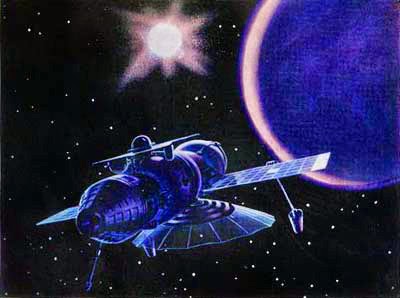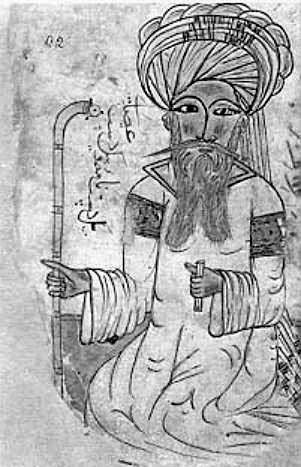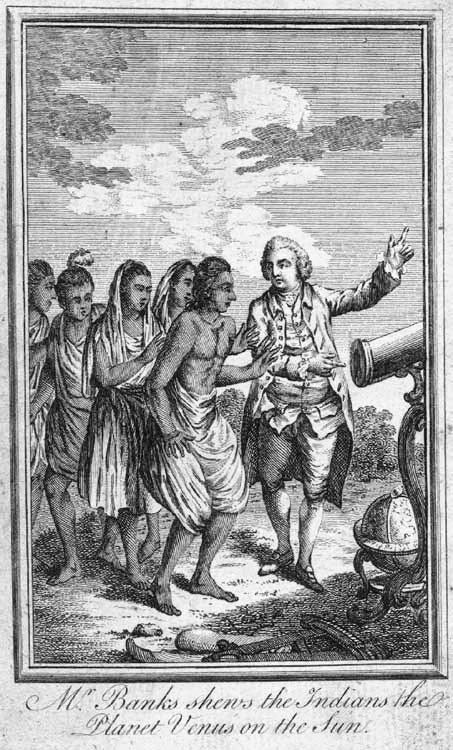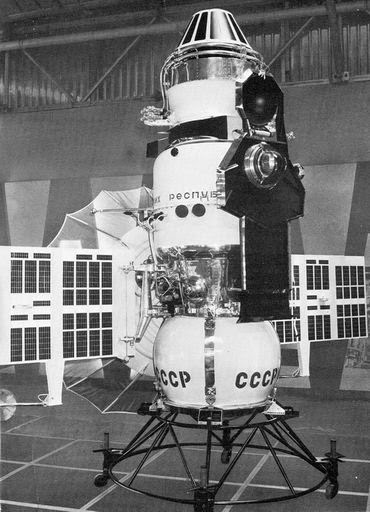Avast ye blog readers and prepare for a ripping yarn! Next week the wife and I are off to St Lucia and believe me we deserve it. Whilst it is something of a no-brainer of a resort for a bit of R&R, I did wonder if I would struggle to find much of historic interest in this particular destination. It did not take long however, to ascertain that St Lucia has a very interesting history indeed. Known as the Helen of the Caribbean, the island changed hands fourteen times during the interminable series of wars between Britain and France; more times than any other Caribbean island. Looking into the early history of its exploration for the first part of this double bill post meanwhile, has thrown up a cast of characters straight out of a Robert Louis Stevenson classic.
St Lucia was most probably but not certainly discovered by Juan de la Cosa, who had captained the Santa Maria on Columbus' 1492 expedition and in 1499 had explored the waters off the northern coast of South America on the expedition led by Alonso de Ojeda. In the following year de la Cosa returned to Europe and produced a detailed Mappa Mundi, which showed all of the discoveries so far made in the New World.
The mappa mundi of Juan de la Cosa
The first European known to have set foot on St Lucia was a one legged pirate by the name of Francois le Clerc. Known as Jambe de Bois 'Wooden leg' Le Clerc had lost his leg during an assault on the island of Guernsey during King Henri II of France's campaign to drive the English from Bordeaux in 1549. In 1552 war broke out between France and Spain and the following year Le Clerc found himself as a licenced privateer in command of a seven ship flotilla sent to wreak havoc amongst Spanish shipping. Accompanied by Huguenot pirate Jacques de Sores, known as L'Ange Exterminateur, for his murderous conduct against Spanish Catholics, Le Clerc led his little fleet against the Canary Islands and Madeira before sailing for the Caribbean. The pirates fell upon the lightly defended settlements on Cuba and Hispaniola with ferocity. In 1554 le Clerc and de Sores attacked Santiago de Cuba and swiftly overcame its defenders, occupying the town for a month before burning it to the ground and sailing away with 80,000 pesos in loot. The following year de Sores attacked and occupied Havana. Finding little in the way of loot he took out his frustrations on the hated Catholic church, destroying religious imagery and even staging a play which mocked the Pope before burning the city to the ground.
De Sores' raid on Havana
Le Clerc next set up base on Pigeon Island, a small outcrop in St Lucia's Gros Inlet. Here he was able to defend against any attacks by the aggressive native Caribs and set out to terrorise Spanish treasure ships. He and his motley crew remained in the Caribbean for several years before sailing once more for European waters to fight for the English against his countrymen, joining in an attack on Le Havre in 1563. Finally Le Clerc sailed for the Azores and here his luck ran out and he was killed by the Spanish. Francois 'Jambe de Bois' Le Clerc, imagined below, is not the only pirate associated with St Lucia. The Black Bay area in the south of the island is so named due to the legend that some hidden treasure stashed by Blackbeard is buried there. I suspect almost every island in the Caribbean has a similar legend however.
 By the early 1600's the English, French and Dutch were taking an interest in establishing colonies in South America and the Caribbean as opposed to simply plundering the Spanish. In 1605 a ship named the Olive Blossom set sail from England carrying colonists for the fledgling English outpost in Guyana. It was a difficult voyage. Blown off course and running desperately short of supplies the Olive Blossom finally made landfall on the southern tip of St Lucia. The ship was immediately surrounded by the native Caribs in their canoes, seemingly peaceful and eager to trade fruit, vegetables, meat, sugar cane and tobacco in exchange for any metal objects that the colonists could spare. Encouraged by this reception, the leader of the colonists Capt. Nicholas St John decided to remain behind and make a go of establishing a colony. Sixty seven colonists elected to remain with him and the Olive Blossom sailed away, leaving them to establish a fortified settlement around some huts sold to them by the natives. Amongst their number was one John Nicholl, whose account of their adventures has survived.
By the early 1600's the English, French and Dutch were taking an interest in establishing colonies in South America and the Caribbean as opposed to simply plundering the Spanish. In 1605 a ship named the Olive Blossom set sail from England carrying colonists for the fledgling English outpost in Guyana. It was a difficult voyage. Blown off course and running desperately short of supplies the Olive Blossom finally made landfall on the southern tip of St Lucia. The ship was immediately surrounded by the native Caribs in their canoes, seemingly peaceful and eager to trade fruit, vegetables, meat, sugar cane and tobacco in exchange for any metal objects that the colonists could spare. Encouraged by this reception, the leader of the colonists Capt. Nicholas St John decided to remain behind and make a go of establishing a colony. Sixty seven colonists elected to remain with him and the Olive Blossom sailed away, leaving them to establish a fortified settlement around some huts sold to them by the natives. Amongst their number was one John Nicholl, whose account of their adventures has survived.According to Nicholl, at first everything went well. The settlers befriended a Carib leader whose name has been Anglicised as Anthony and later his brother Augraumart. Happy to trade with them, Anthony and Augraumart visited the settlement regularly, bringing food and tobacco for trade. Along with fruit and vegetables, the settlers were brought turtles, land crabs and iguanas to eat by the natives and soon began to catch these creatures themselves. It became apparent that there was rivalry between the brothers and both of them warned the English settlers against the murderous intentions of the other. Things began to turn sour when Anthony was given a sword as a gift by one of the settlers but Capt. St John feared that this was dangerous and so set out and stole it back. This alienated Anthony and the visits stopped. Shortly after, Augraumart invited a party of settlers, including John Nicholl, to visit his village. On the way they were ambushed. Arrows flew from the undergrowth and the English returned fire with their firearms. When they drew their swords however, the Carib warriors closed in for the kill. Nicholl relates how two of his comrades were chased into the surf and killed whilst others were felled by arrows. Amongst the attackers he recognised Anthony and so the two brothers had clearly united against the English. Running for his life, Nicholl jumped into a lake and swam across to safety despite two arrows in his back.
This stamp from 1905 celebrates the 300th anniversary of the Olive Blossom's ill fated voyage
Returning to the camp he raised the alarm and the rest of the settlers prepared to defend themselves against the attack of the Caribs. They had a cannon which they loaded with stones and used to great effect against their attackers, felling many of them and driving off their assaults which went on for a week. Burning arrows were fired into the encampment, burning down the huts and the settlers were assailed from both land and sea. Finally, exhausted, running low on supplies and ammunition, the nineteen survivors agreed terms with their attackers. They agreed to leave the island and traded all their remaining goods in exchange for a boat, which they loaded with supplies and set sail southward, hoping to reach mainland South America and the Spanish colonies of New Granada. The little boat was wrecked on small rocky island off the coast of Venezuela. Fifteen days later, starving, they were rescued by a Spanish ship but Nicholl's trials were not over. Suspected of being a spy, he found himself imprisoned by the Spanish authorities but finally managed to convince them that he was merely an unfortunate colonist. Nicholl returned to England in 1607 and published an account of his adventures. He died in 1637.
 The early history of British colonisation in the southern Caribbean is predominantly the story of one family; the Warners. Sir Thomas Warner was an English country gentleman and soldier with a taste for adventure. Having previously served as captain of James I's bodyguard, Warner set out in 1619 upon the expedition led by Walter Raleigh's former lieutenant Roger North to establish a colony at Oyapoc in Guyana. The colony was abandoned within a year but Warner returned with the idea of instead establishing a colony on one of the islands of the Lesser Antilles. In 1624, having claimed Barbados for the crown but rejected it as a suitable colony for lack of fresh water, he landed in St Kitts accompanied by 13 colonists. Further colonists arrived in the following year led by Warner's fellow Suffolk landowner Samuel Jefferson; an ancestor of future US president Thomas Jefferson. The colonists planted tobacco and established friendly relations with the local chief Tegramund. The colony flourished and by 1626 there were over 100 colonists. The French had also established a rival colony on the island.
The early history of British colonisation in the southern Caribbean is predominantly the story of one family; the Warners. Sir Thomas Warner was an English country gentleman and soldier with a taste for adventure. Having previously served as captain of James I's bodyguard, Warner set out in 1619 upon the expedition led by Walter Raleigh's former lieutenant Roger North to establish a colony at Oyapoc in Guyana. The colony was abandoned within a year but Warner returned with the idea of instead establishing a colony on one of the islands of the Lesser Antilles. In 1624, having claimed Barbados for the crown but rejected it as a suitable colony for lack of fresh water, he landed in St Kitts accompanied by 13 colonists. Further colonists arrived in the following year led by Warner's fellow Suffolk landowner Samuel Jefferson; an ancestor of future US president Thomas Jefferson. The colonists planted tobacco and established friendly relations with the local chief Tegramund. The colony flourished and by 1626 there were over 100 colonists. The French had also established a rival colony on the island.Thomas Warner had a degree of respect for the native inhabitants. Indeed, although he had brought his wife and children with him, he also took a Carib mistress who bore him a son. The boy was named William but his native blood would be resented by his family and he would be known all his life as Carib Warner. Despite his regard for the natives, Warner's relations with them soon soured as increasing numbers of colonists demanded more land for cultivation. Tipped off by an Indian woman, perhaps the mother of his son, that an attack was being planned by the Carib against the settlers, Warner colluded with his French counterpart Pierre Belain d'Esnambuc and the colonists fell upon the natives in a pre-emptive nocturnal attack. Over a hundred of the Carib were killed and the remainder taken as slaves or driven from the island. An invasion by thousands of Caribs from neighbouring islands was beaten back by a desperate joint defence. Following this confrontation, remembered by the locals as the battle of the Bloody River, the French and English decided to divide the island between themselves.
Depiction of a battle between settlers and Carib natives
The English however were not content to leave St Lucia to the French. The growing importance of the sugar trade fuelled the natural rivalry between England and France to dominate the islands of the Caribbean. In 1660 William 'Carib' Warner had been appointed governor of Dominica. With his native blood, he also established himself as a chief amongst the natives and they were willing to follow him into war against the French. With a force of 600 men in 17 pirogues; thirty foot war canoes which carried a single square rigged sail, Warner landed in St Lucia and succeeded in overrunning the French settlements and claiming the island for Britain. A thousand settlers followed but within two years they had been all but wiped out by disease and just 89 of them survived. At this point the island was once more claimed by the French West India company. It became a French colony ten years later although it would change hands many more times over the next century and a half.
The Carib pirogue allowed the natives to project their power between the islands
Part Two Here
More on John Nicholl
http://www.jakoproductions.com/main.asp?sID=15&page=OlipheBlossome
More on the Warners
http://irclay.hubpages.com/hub/Dominica-Carib-People
You may also enjoy - Mr and Mrs Jones and the Temple of Doom
http://slingsandarrowsblog.blogspot.co.uk/2014/02/mr-and-mrs-jones-and-temple-of-doom.html











.jpg)



